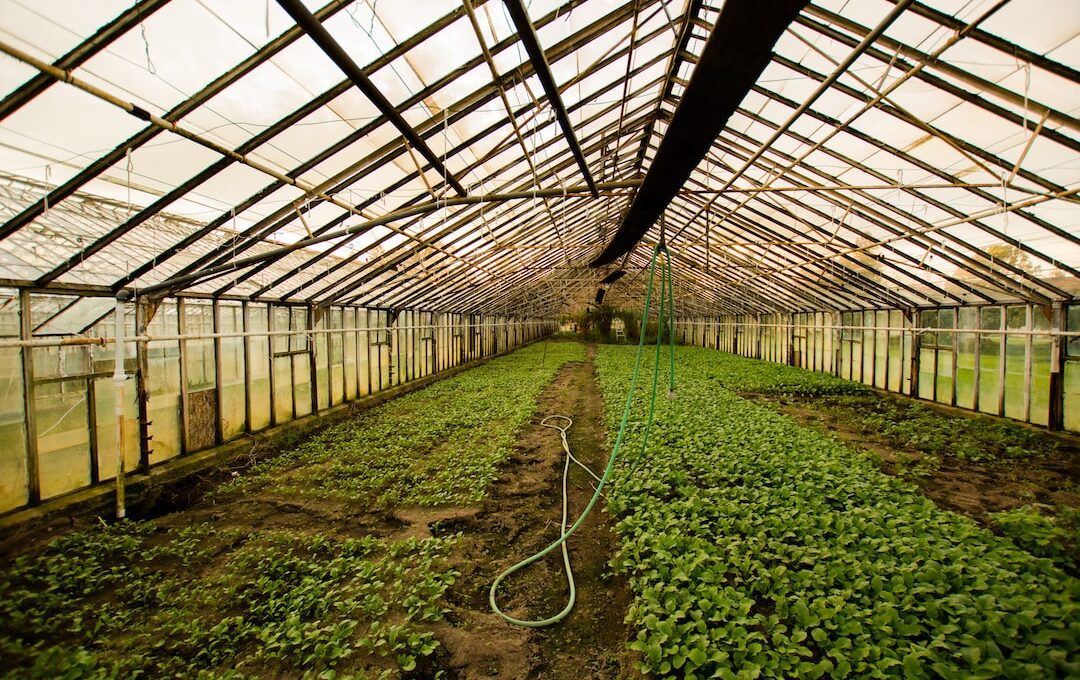Are you unsure about how often to water your forsythia plant? Well, you’ve come to the right place! Proper watering is essential for the health and vitality of your forsythia, and it’s important to get it right.
In this article, we will guide you through the process of understanding the water needs of forsythia and help you establish a watering schedule that ensures its well-being. We will also discuss the signs of overwatering or underwatering your forsythia, as well as provide you with best practices and additional tips for maintaining its health.
By following these guidelines, you can ensure that your forsythia thrives and blooms beautifully. So let’s dive in and learn how to keep your forsythia happy and healthy with the right amount of water!
Quick Summary
- Water forsythia once or twice a week during spring and summer
- Check soil moisture before watering to avoid overwatering
- Deep watering promotes root growth
- Mulching helps retain moisture and regulate soil temperature
Understanding the Water Needs of Forsythia
To properly understand the water needs of forsythia, you should ensure that you are consistently providing the appropriate amount of moisture for its optimal growth. Watering frequency is an essential factor to consider when caring for forsythia.
During the spring and summer months, when the plant is actively growing, it is crucial to water it regularly. Aim to water your forsythia once or twice a week, depending on the weather conditions. If it’s been particularly hot and dry, you may need to water more frequently to maintain optimal soil moisture.
When watering your forsythia, it’s important to water deeply. This means that you should water the plant until the soil is thoroughly soaked. This will encourage the roots to grow deeper into the ground, making the plant more resilient to drought conditions. Additionally, watering deeply helps to prevent the soil from drying out too quickly, ensuring that the plant has consistent access to moisture.
Monitoring the soil moisture is key to determining when to water your forsythia. You can check the soil by inserting your finger into the ground up to the first knuckle. If the soil feels dry at this depth, it’s time to water. However, if it feels moist, you can wait a little longer before watering again.
By following these watering guidelines, you can ensure that your forsythia receives the proper amount of moisture for its optimal growth and health.
Factors to Consider When Watering Forsythia
Make sure you take into account various factors when deciding how frequently to give your forsythia the necessary hydration it needs. Proper watering is essential for the health and vitality of your forsythia, so here are some key factors to consider:
-
Climate: The climate in your area plays a significant role in determining how often you should water your forsythia. In hot and dry climates, you may need to water more frequently, while in cooler and more humid climates, less frequent watering may be sufficient.
-
Soil moisture: Check the moisture levels of the soil regularly. Forsythias prefer well-drained soil, so it’s important to avoid overwatering, which can lead to root rot. On the other hand, under-watering can cause stress and hinder growth.
-
Plant age and size: Young forsythia plants require more frequent watering than established ones. Additionally, larger plants with more extensive root systems may need more water to reach all the roots effectively.
Proper watering has numerous benefits for your forsythia. It helps maintain healthy foliage, promotes vibrant blooms, and supports overall plant growth. By considering these factors and providing adequate hydration, you can ensure the longevity and beauty of your forsythia while keeping it safe from the potential risks of over or under-watering.
Establishing a Watering Schedule for Forsythia
Consider the specific needs of your forsythia when establishing a regular watering routine, ensuring the health and vitality of your plant. When it comes to establishing a watering routine for your forsythia, there are a few factors to consider.
First, you need to determine the optimal watering frequency. Forsythias generally prefer moist soil, but they don’t like to be constantly wet. Overwatering can lead to root rot and other diseases. On the other hand, underwatering can cause stress and hinder the plant’s growth.
To determine the optimal watering frequency for your forsythia, you should consider the weather conditions and the type of soil you have. During hot and dry periods, you may need to water your forsythia more frequently, while during cooler and wetter periods, you can reduce the frequency. Sandy soils tend to drain faster and may require more frequent watering, while clay soils retain moisture better and may require less frequent watering.
In general, it’s recommended to water your forsythia deeply once a week, providing enough water to reach the root zone. This encourages deep root growth and helps the plant withstand drought conditions. However, it’s important to monitor the soil moisture level and adjust the watering frequency accordingly.
By establishing a watering routine that considers these factors, you can ensure that your forsythia receives the proper amount of water for optimal health and vitality.
Signs of Overwatering or Underwatering Forsythia
One way to gauge if your forsythia is suffering from too much or too little water is by observing its physical appearance. It’s important to prevent overwatering, as it can lead to root rot and other diseases that can harm your forsythia. To avoid overwatering, make sure the soil is well-drained and water your forsythia only when the top inch of soil feels dry to the touch. Overwatering prevention is crucial for the health of your plant.
On the other hand, recognizing dehydration symptoms is also essential to ensure your forsythia gets enough water. Signs of underwatering include wilted and drooping leaves, dry and brittle stems, and yellowing or browning of the leaves. If you notice these symptoms, it’s important to water your forsythia thoroughly and deeply. The goal is to moisten the entire root zone, so the water reaches the deeper roots.
By observing the physical appearance of your forsythia and recognizing dehydration symptoms, you can ensure that your plant receives the right amount of water. Remember, preventing overwatering and providing enough water are both crucial for the health and well-being of your forsythia.
Should I Water Seedlings and Forsythia at the Same Frequency?
When it comes to watering seedlings regularly and forsythia, it’s essential to consider their specific needs. While seedlings often require consistent moisture, forsythia plants are more drought-tolerant once established. Therefore, watering seedlings and forsythia at the same frequency may not be necessary. It’s crucial to understand each plant’s requirements to ensure they receive adequate hydration for healthy growth.
Best Practices for Watering Forsythia
To ensure the optimal health and vibrant blooms of your forsythia, it’s essential to establish a consistent watering schedule. Proper watering frequency and techniques are crucial for the well-being of your plant. Here are some best practices to help you maintain a safe and healthy environment for your forsythia:
-
Water deeply: Give your forsythia a thorough watering, ensuring that the soil is moistened to a depth of at least 6 inches. This encourages the plant’s roots to grow deeper and become more resilient.
-
Mulch it: Apply a layer of organic mulch around the base of your forsythia. This helps retain moisture, regulate soil temperature, and prevent weed growth. It also promotes a safer environment for the plant by reducing the risk of soil erosion.
-
Monitor the weather: Pay attention to the weather forecast and adjust your watering schedule accordingly. If it has rained recently, you may need to water less frequently. On the other hand, during hot and dry periods, you may need to water more often to prevent drought stress.
-
Avoid overwatering: While it’s important to keep your forsythia adequately hydrated, be cautious not to overwater. Overwatering can lead to root rot and other fungal diseases. Allow the soil to dry slightly between waterings to prevent waterlogged conditions.
-
Water in the morning: Watering your forsythia in the morning allows the foliage to dry before nightfall, reducing the risk of fungal diseases. It also helps maximize water absorption by the plant.
By following these watering techniques and maintaining a consistent schedule, you can ensure the safety and well-being of your forsythia, resulting in beautiful blooms and a thriving plant.
Additional Tips for Maintaining Forsythia’s Health
Take a moment to embrace the vibrant beauty of your flourishing forsythia and discover some additional tips to ensure it’s continued health and vitality. Keeping your forsythia healthy is important to maintain its stunning appearance and ensure it thrives for years to come. Here are some additional tips to help you in maintaining its health.
Firstly, it’s crucial to regularly inspect your forsythia for any signs of pests or diseases. Look for common issues such as aphids, spider mites, or powdery mildew. If you notice any problems, promptly take action to prevent further damage. You can use organic insecticides or fungicides to treat the affected areas.
Secondly, pruning is an essential part of forsythia maintenance. After the blooming season, trim away any dead or diseased branches to promote new growth and maintain a healthy shape. Be sure to use clean, sharp pruning shears to prevent the spread of diseases.
Lastly, remember to fertilize your forsythia annually to provide it with the necessary nutrients for optimal growth. Use a balanced fertilizer specifically formulated for flowering shrubs, following the instructions on the packaging.
By following these additional tips, you can ensure the continued health and vitality of your forsythia, allowing it to thrive and bring beauty to your garden.
Common Mistakes to Avoid When Watering Forsythia
Make sure you’re mindful of these common mistakes to avoid when giving your forsythia a good drink. Properly watering your forsythia is crucial for its health and growth.
One common mistake is overwatering. While it’s important to keep the soil moist, overwatering can lead to root rot and other diseases. To avoid this, check the soil moisture before watering. Stick your finger about an inch into the soil, and if it feels dry, it’s time to water.
Another mistake is underwatering. Forsythias require regular watering, especially during hot and dry weather. If the soil feels dry, give it a deep watering, allowing the water to penetrate the root zone. Avoid shallow watering, as it promotes shallow root growth.
Additionally, avoid watering the foliage. Wet leaves can encourage fungal diseases. Instead, aim for the base of the plant, directing the water towards the roots.
Lastly, don’t forget to mulch. Mulching helps retain moisture, regulate soil temperature, and prevent weed growth. Apply a layer of organic mulch around the base of the plant, but make sure to keep it away from the stems.
By avoiding these common mistakes and following proper watering techniques, your forsythia will thrive and bloom beautifully.
Frequently Asked Questions
Can I use tap water to water my Forsythia?
Yes, you can use tap water to water your forsythia. Tap water is safe and won’t harm your plant. Different water sources may affect growth, but tap water is a good choice.
What is the best time of day to water Forsythia?
The best time to water forsythia is in the morning, as this allows the plants to absorb the water before the heat of the day. Water them at least once a week to maintain their health.
Should I water my Forsythia during the winter?
During winter, it’s not necessary to water forsythia regularly. However, you should prune it in late winter or early spring. It’s also important to cover your forsythia during extreme cold temperatures to protect it from frost damage.
Can I use a sprinkler system to water my Forsythia?
Yes, you can use a sprinkler system to water your forsythia. However, keep in mind that sprinklers may not be as effective as alternative watering methods like drip irrigation. Consider the needs of your plants and ensure they receive adequate water.
How long should I wait between watering sessions for my Forsythia?
To ensure the safety of your potted forsythia, water it every 7-10 days, allowing the soil to dry out between watering sessions. Signs of overwatering include yellowing leaves, wilting, and root rot.
Conclusion
To conclude, watering your forsythia regularly and consistently is key to maintaining its health and vibrant appearance. By understanding its water needs and considering factors such as weather and soil conditions, you can establish an effective watering schedule.
Pay attention to signs of overwatering or underwatering, and adjust accordingly. Remember to water deeply and avoid common mistakes like overwatering or using improper watering techniques. By following these best practices, you can ensure that your forsythia thrives and continues to beautify your garden.









